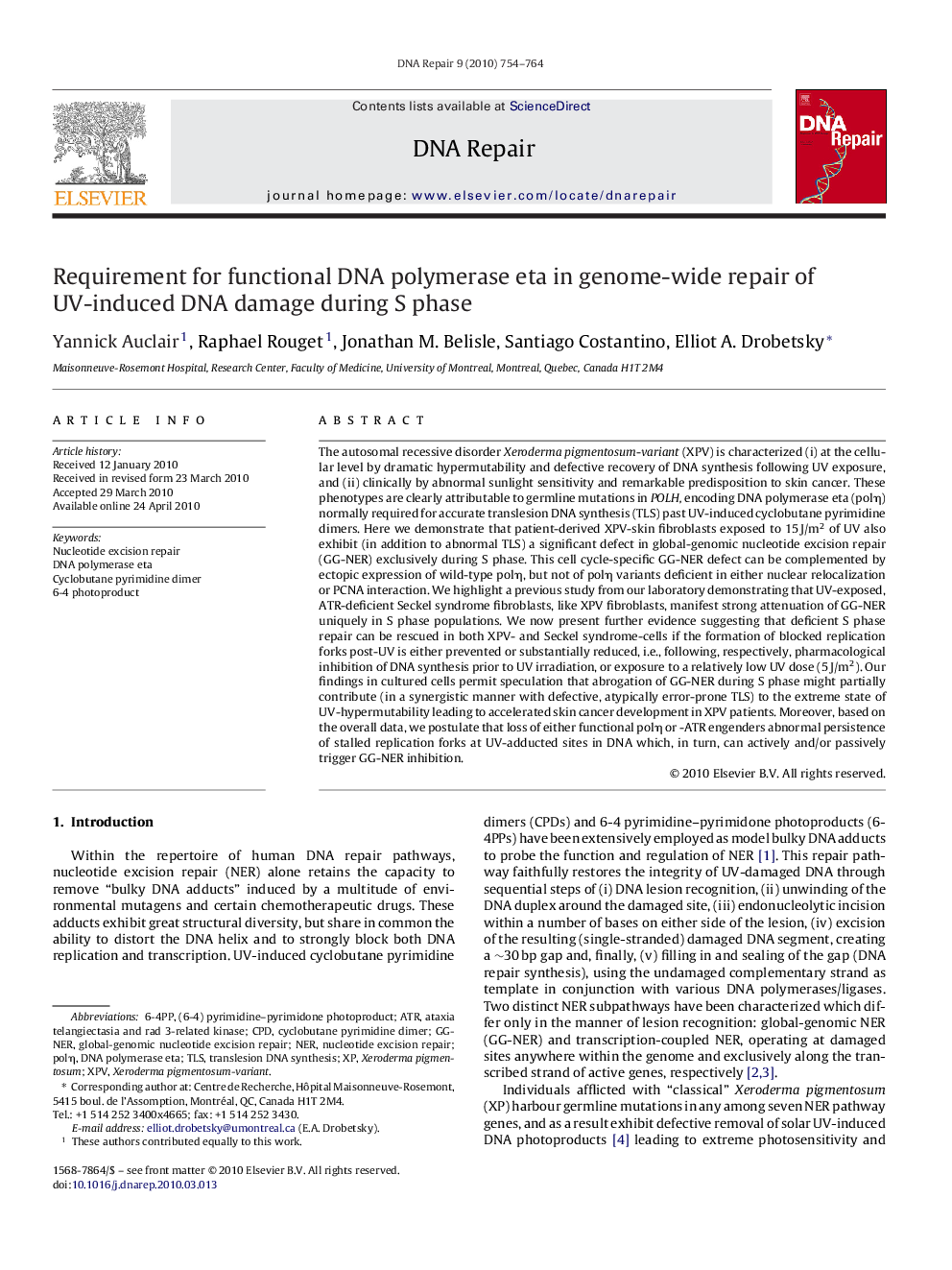| کد مقاله | کد نشریه | سال انتشار | مقاله انگلیسی | نسخه تمام متن |
|---|---|---|---|---|
| 1980662 | 1061872 | 2010 | 11 صفحه PDF | دانلود رایگان |

The autosomal recessive disorder Xeroderma pigmentosum-variant (XPV) is characterized (i) at the cellular level by dramatic hypermutability and defective recovery of DNA synthesis following UV exposure, and (ii) clinically by abnormal sunlight sensitivity and remarkable predisposition to skin cancer. These phenotypes are clearly attributable to germline mutations in POLH, encoding DNA polymerase eta (polη) normally required for accurate translesion DNA synthesis (TLS) past UV-induced cyclobutane pyrimidine dimers. Here we demonstrate that patient-derived XPV-skin fibroblasts exposed to 15 J/m2 of UV also exhibit (in addition to abnormal TLS) a significant defect in global-genomic nucleotide excision repair (GG-NER) exclusively during S phase. This cell cycle-specific GG-NER defect can be complemented by ectopic expression of wild-type polη, but not of polη variants deficient in either nuclear relocalization or PCNA interaction. We highlight a previous study from our laboratory demonstrating that UV-exposed, ATR-deficient Seckel syndrome fibroblasts, like XPV fibroblasts, manifest strong attenuation of GG-NER uniquely in S phase populations. We now present further evidence suggesting that deficient S phase repair can be rescued in both XPV- and Seckel syndrome-cells if the formation of blocked replication forks post-UV is either prevented or substantially reduced, i.e., following, respectively, pharmacological inhibition of DNA synthesis prior to UV irradiation, or exposure to a relatively low UV dose (5 J/m2). Our findings in cultured cells permit speculation that abrogation of GG-NER during S phase might partially contribute (in a synergistic manner with defective, atypically error-prone TLS) to the extreme state of UV-hypermutability leading to accelerated skin cancer development in XPV patients. Moreover, based on the overall data, we postulate that loss of either functional polη or -ATR engenders abnormal persistence of stalled replication forks at UV-adducted sites in DNA which, in turn, can actively and/or passively trigger GG-NER inhibition.
Journal: DNA Repair - Volume 9, Issue 7, 1 July 2010, Pages 754–764